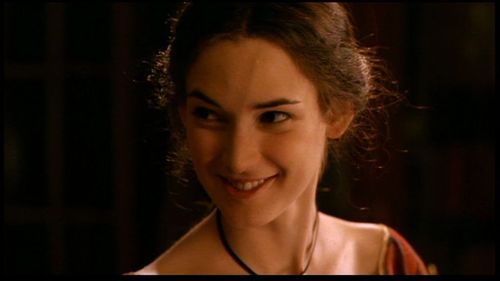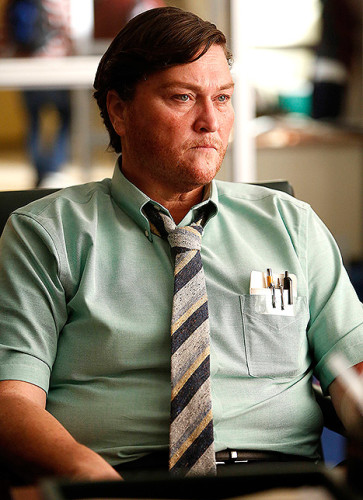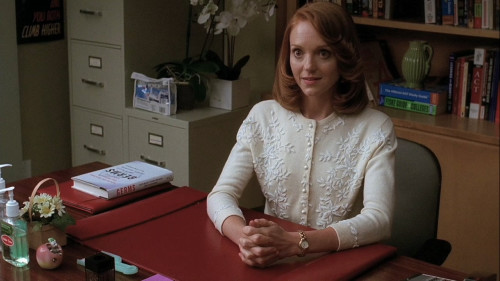Written by Jackson Adler as part of our theme week on The Female Gaze.
(Note: Louisa May Alcott’s novels Little Women: Meg, Jo, Beth, and Amy and Good Wives, published in 1868 and 1869, respectively, are often combined into one volume as Little Women Part 1 and Little Women Part 2. Henceforth, when I refer to Alcott’s novel Little Women, I refer to the combined novel as a whole.)
Many girls and women have loved Little Women and seen their ambitions, drive, or love of reading and writing reflected in Josephine “Jo” March. Harry Potter author J.K. “Jo” Rowling told the New York Times, “My favorite literary heroine is Jo March. It is hard to overstate what she meant to a small, plain girl called Jo, who had a hot temper and a burning ambition to be a writer.” In a world that privileges men and censors women, the largely female cast of Little Women and its main character Jo have naturally been a relief and an inspiration for women, serving as a feminist narrative to many. However, the male gaze has been applied to most of the film and TV applications of the story, despite the scripts often being at least co-written by women. The male gaze tends to twist the romantic ending to use as a weapon against female viewers – reminding them of their “place” in society, and the expectation for them to marry and become housewives. Gillian Armstrong’s 1994 film, as previously pointed out by Jessica Freeman-Slade on Bitch Flicks, is far superior to these adaptations in maintaining the female centric integrity of the story, allowing the characters dignity and freedom of expression, and emphasizing Jo’s choices and self-determination. In my research, I have only come across one lonely paper and one recent play that address the possibility that Jo could be transgender. However, I think the case for this view is strong, and that discussion of Jo’s gender and how it is and isn’t seen and represented is important.
Little Women follows four Massachusetts siblings coming of age during and directly after the American Civil War. The four siblings (and I cannot be the only person on Earth who has sorted them into Hogwarts houses) are: Margaret “Meg” March (the sensible Ravenclaw), Josephine “Jo” March (the brash Gryffindor), Elizabeth “Beth” March (the loyal Hufflepuff), and Amy March (the ambitious Slytherin). (Note: Amy and Slytherin both get a lot of haters, but Amy and many Slytherins are wonderful and sweet people, truly.) Though each sibling is allotted a fair amount of attention, the story mostly focuses on Jo, the “tomboy,” for whom I will henceforth use male pronouns. One of Jo’s first lines in the novel, and one repeated in many adaptions, is “I can’t get over my disappointment in not being a boy…”
At 15 years old, and the start of the story, Jo hates his “rapidly” developing body. His “one beauty” is his “long, thick hair,” and yet he “usually bundle[s] [it] into a net, to be out of [his] way.” The word “boyish” is often used to describe Jo, his preferred name (he hates when his aunt calls him “Josephine”), the habits he uses, and the activities he enjoys. He loves using “boyish” slang and exhibiting “gentlemanly” and “boyish” habits, such as keeping his hands in his pockets and whistling. He even says that he does these things for the very reason that they are “boyish.” Jo’s father (a reverend) and his mother (whom the children refer to as “Marmee,” which in their Eastern Massachusetts/Boston dialect is pronounced as the more common “mommy”) require each of their children strive to fix their bad habits, described as their “burdens” or “bundles” to bear. Meg has her vanity, Beth has her shyness (so great she often has difficulty voicing her own opinions or standing up to others), and Amy has her selfishness. As for Jo, he is heartbreakingly required to try to be more “ladylike” and “womanly.”
This includes some useful habits, such as learning to control his temper so as to treat his siblings (namely Amy) better. However, while Laurie is allowed “Byronic fits of gloom,” Jo is encouraged to be “pleasant” because, as Amy herself states, “women should learn to be agreeable” so as to be “better liked” by society. Far from just Jo’s expressions of everyday emotions, Jo is pressured to police his words and actions every day, such as only barely resisting talking sports at a party. To please his family, Jo tries to adopt “ladylike” behavior, but often fails so miserably that he causes his family (especially Meg and Amy) embarrassment. Jo often feels “lonely” and misunderstood, even when surrounded by people who love him, and sometimes becomes “irritable” because of it. Jo finds some relief in his friendship with Theodore “Laurie” Laurence, with whom he skates, flies kites, goes rowing, and runs races. Laurie even often calls Jo “fellow” and other masculine terms of endearment. When Jo and Laurie feel particularly confined and restricted by their families and by societal expectations, they almost run away to be cabin boys together for the “adventure,” and only stop themselves due to their feelings of responsibility and love for their families. However, even Laurie’s friendly view and boyish treatment of Jo is limited. Laurie uses “sentiment” (flirtation) and is “wheedlesome” (manipulative) when pressuring Jo to marry him, proposing in large part because “everyone expects it.”
At the end of the novel and in the sequels Little Men and Jo’s Boys, Jo and his husband Professor Friedrich “Fritz” Bhaer found a school and a college for diverse pupils, giving a home and love to children who would otherwise be overlooked or even discriminated against. These institutions are open to both boys and girls, include biracial students (one a quarter Black and one part Native-American), and students with mental and physical disabilities. One of his students is another “tomboy” who ends up becoming a doctor and never marrying. Jo is particularly close with the male students and the “tomboy,” as he “sympathize[s]” with boys more than girls.
Out of the many portrayals of Jo March, I think June Allyson’s comes closest to being the “tomboy” of the novel, particularly evident when Allyson emphasizes the line about how “disappointed” Jo is at not “be[ing] a boy.” Not that Allyson’s goal was to portray the character as a transboy (the term didn’t even exist yet!), but a specific kind of heartbreak and frustration come through nonetheless. Katharine Hepburn’s (1933), Allyson’s (1949), and Susan Dey’s (1978) Jos were sadly glamoured up by their male directors. Susan Dey’s Jo feels especially constricted, as if Dey wasn’t permitted to express the character as she saw fit because directors David Lowell Rich and Gordon Hessler were constantly holding her back from showing Jo’s fire and rambunctiousness. While the TV movie still retains some feminist moments, Jo is often grabbed and physically held back by male characters, especially Laurie. Winona Ryder’s (1994) is less objectified or confined under the female gaze of director Gillian Armstrong. Though the characters of Jo’s sisters and mother are more developed and allowed room to breath under the female gaze, Ryder’s Jo is a spirited young woman who merely wants to express herself in whatever way she wants. This is somewhat comparable to director Gaby Dellal of About Ray, stating that she didn’t cast a transgender actor as the title character because that “isn’t what [the] story is about” and problematically refers to the character as “a girl who is being herself.” Ryder’s Jo does not have the same kind of yearning, heartbreak, anxiousness, and irritability that comes with being forced to hide from others (as well as oneself) one’s own true gender.
The male gaze either holds Jo back from the start, or else shows an “educational” transformation from an “unruly” female into a “desirable” young woman who knows her place. Under the male gaze, Laurie is often made into a combination of undesirable nerd and total creeper in order to justify Jo’s decline of his marriage proposal. It is implied in the 1949 adaptation that Laurie continues to have feelings for Jo, while in the 1978 TV movie it is implied that Susan Dey’s Jo realizes she has feelings for Laurie only after hearing of his marriage to Amy, I guess because the director wanted Jo to learn a lesson about how turning down men is bad? (Yeah, I was yelling at the screen.) Interestingly, this version has one of the best set-ups of Laurie’s and Amy’s relationship (Amy and the other sisters often being denied the screen time they deserve in other adaptations). However, this is because Laurie overcoming his feelings for Jo and realizing his love for Amy is used to punish Jo in this adaptation. Ironically, one of the most positive portrayals of Laurie is under Armstrong’s female gaze. This is because a more complex and autonomous Jo lends to more complex reasons for her turning down the love of his best friend. It’s not that he isn’t a good person, or that she isn’t fond of him, it’s just that she doesn’t love him as anything other than a friend, and she’s not going to commit to an-other-than-blissful relationship just because society thinks that grown men and women can’t be “just friends.”
While I think an adaptation of Little Women that portrays Jo as transgender is incredibly needed, providing representation and history for a marginalized and often silenced group, it would require a transmale gaze, ideally in the form of a transmale director. As Hollywood is so averse at diversifying its behind-the-camera positions in any way, it will probably take some time before a project such as this can be made. However, a historical drama featuring a leading trans character would make a big difference in the lives of young trans people. I know that Jo has made a huge difference in my own life as a transman. Jo and his creator Louisa May Alcott (who went by “Louis” as a young person) often feared being alone. But Jo, myself, and others like us, are not alone – and it’s important for us to know that.










